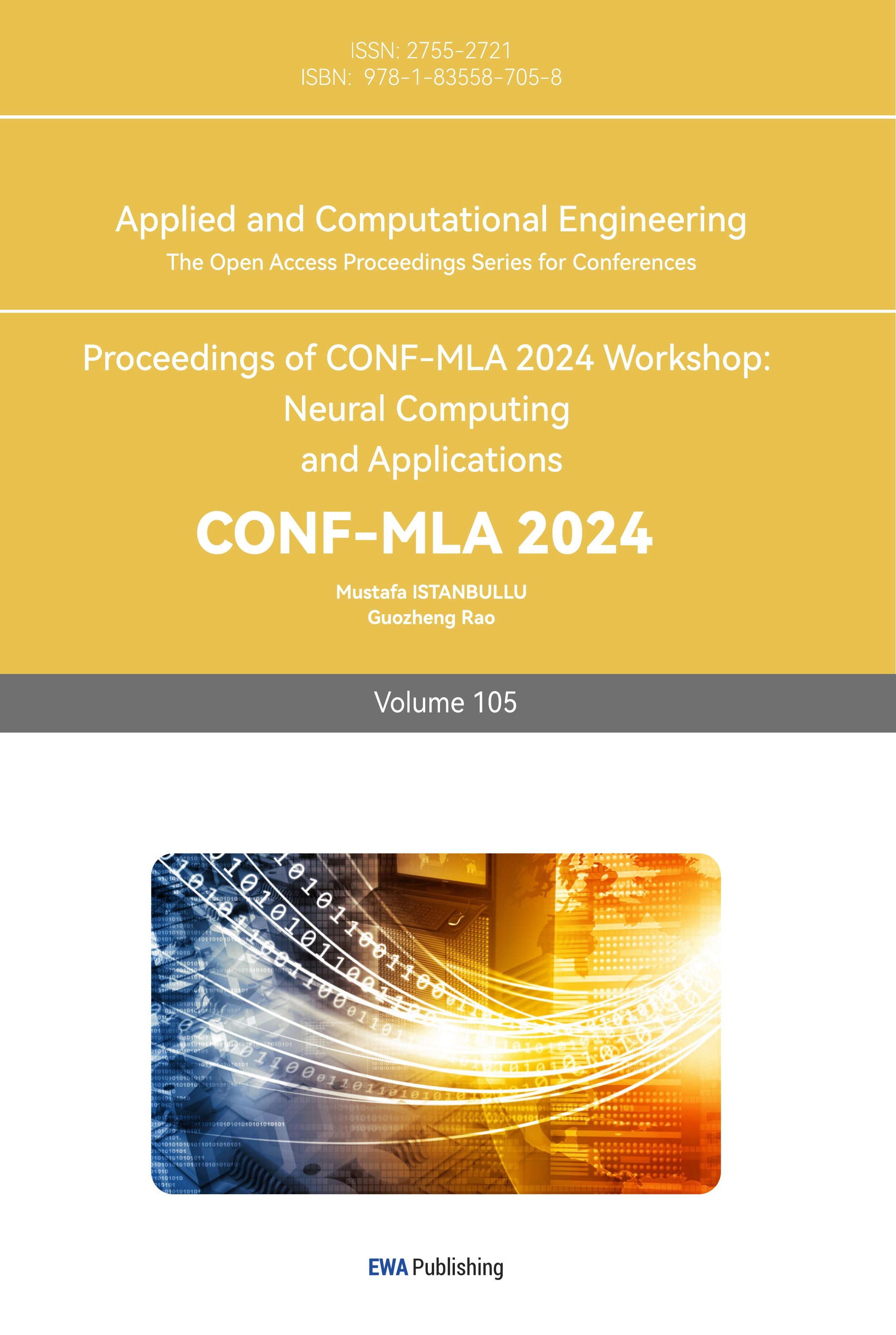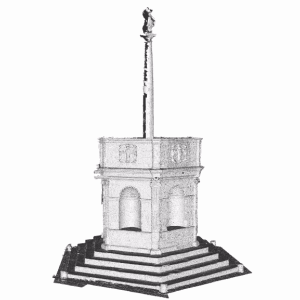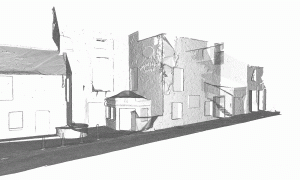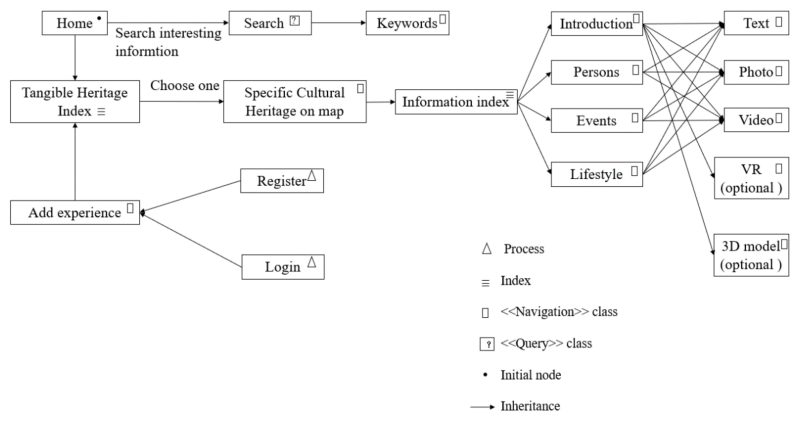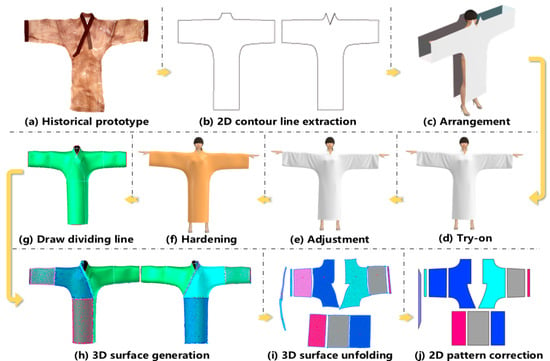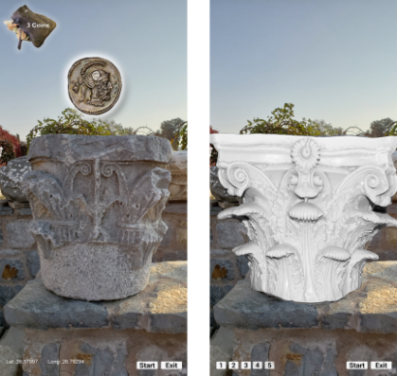1. Introduction
Cultural heritage preservation is an important issue that cannot be overlooked in the process of urban renewal. During urban renewal, many tangible cultural heritages lose their significance due to conflicts with urban development and social interests. The existence of cultural heritage possesses value not only in historical and scientific research but also across various other disciplines. Siân Jones suggests that cultural heritage often embodies complex social values, which differ from the quantitative value standards commonly used in actual disciplinary research. Analyzing these social values requires qualitative social research [1]. Therefore, the preservation of cultural heritage is not solely the responsibility of relevant scholars; it also requires the participation of the public.With the development of digital technologies and the widespread application of techniques such as 3D reconstruction, augmented reality, and laser scanning, the preservation and exhibition of cultural heritage can utilize certain digital technologies to enhance public awareness.The field of human-computer interaction can provide appropriate user interfaces, tools, and platforms for individuals from diverse social and cultural backgrounds and varying abilities. This is particularly important for ensuring that vulnerable groups or users with lower digital literacy can also access the digital experiences offered in heritage preservation exhibitions [2]. Existing research primarily focuses on exploring the new possibilities that the field of human-computer interaction can bring to the preservation of tangible cultural heritage. It delves into the application of human-computer interaction technologies in three key areas: the protection of cultural heritage, the restoration and display of heritage, and enhancing the interactivity of heritage for content promotion. Currently, the majority of related technological applications are concentrated in the field of restoration and display, where virtual reality and augmented reality are utilized to enhance the presentation of cultural heritage, allowing visitors to experience it in a more immersive and intuitive manner.
There exists a reciprocal relationship between human-computer interaction and cultural heritage preservation. On one hand, human-computer interaction provides new paradigms for the discovery, preservation, and display of cultural heritage. On the other hand, the human-computer interaction technologies applied in cultural heritage preservation have also become an integral part of heritage protection research, making human-computer interaction a concept that is no longer isolated. As the authority of cultural heritage preservation is increasingly opened to the public through technology, it is essential to consider the communication biases that may arise in different contexts. These biases could significantly impact the objectivity of heritage preservation. Therefore, it is crucial to avoid the misuse of human-computer interaction technologies; however, research in this area remains relatively scarce. This review aims to analyze the intersection between the field of human-computer interaction and the preservation of tangible cultural heritage. The methodology involves keyword searches across multiple databases, followed by the selection, categorization, and analysis of relevant journal articles and conference papers, ultimately summarizing the latest research advancements in this area.
2. Main application area of HCI in cultural heritage preservation
The applications of human-computer interaction in the context of cultural heritage can be categorized into three main areas: (1) the collection and preservation of cultural heritage information, (2) the use of technology for the restoration and display of heritage, and (3) the gamification of cultural heritage.
2.1. Collection and preservation of information
Traditional media often presents cultural heritage information in a somewhat vague manner. The limitations of this information make it challenging for individuals to intuitively grasp the actual value of cultural heritage, particularly for those who are unable to visit the sites in person.With the advancement of digital technologies, most research tends to combine heritage preservation with digitization, leading to the emergence of the concept of "digital heritage."This concept encourages public participation in the collection of heritage information, aiming to establish a form of heritage information preservation that benefits both professional researchers and non-expert audiences [3].
Cultural heritage can be classified based on its form of existence into two categories: tangible cultural heritage and intangible cultural heritage. Tangible cultural heritage includes structures, landscapes, artifacts, and so on. Traditional preservation methods primarily involve archaeological research to infer their original states, followed by protection and restoration based on existing conditions. In contrast, the traditional preservation methods for intangible cultural heritage rely on information collection, utilizing various traditional media for data entry and preservation, ultimately allowing cultural heritage to continue through these media. Digital heritage facilitates public participation in the preliminary collection of heritage information by providing platforms that grant participants certain access privileges. This preservation approach allows cultural heritage information to be saved in an open format, significantly broadening its dissemination range (Fig.1). In contrast to traditional heritage preservation, which generally involves no public participation throughout the entire process of information acquisition and research protection, the concept of digital heritage supports the public disclosure of heritage information at multiple stages. It encourages public involvement and contributions to content. Research has analyzed the cultural heritage crowdsourcing initiative launched by the YLE website, which calls on the public to mark points of interest on an interactive map interface related to conflict sites. Participants can also upload photos or write descriptions through the interface. During this initiative, contributors provided many previously unrecognized points from earlier studies, enhancing the mapping of conflict site distribution. This demonstrates the irreplaceable role of public participation in the collection of cultural heritage information [4].
Figure 1. Established Digital Heritage Model [5] | |
However, the concept of digital heritage has sparked a series of discussions regarding the authenticity of heritage. The concerns primarily focus on aspects such as the methods of creating digital cultural heritage, issues of ownership, and the backgrounds of the creators. In the process of digital heritage becoming a method of cultural heritage preservation, the field of human-computer interaction plays a crucial role in balancing these factors and prompts us to consider the relationship between individual and collective memory [6]. In the process of collecting cultural heritage information and establishing digital heritage, it is essential to prioritize the protection of the projects themselves and ensure that the heritage descriptions and the cultural and social values they embody are adequately safeguarded. Benshuo Wang, Li Dai, and other researchers designed a conceptual model for a multimedia platform based on this idea (Fig.2). Users can search for and view map information related to tangible cultural heritage, access detailed information about relevant cultural sites, and upload their own field experiences through this platform [7]. This approach not only helps the public access more information about heritage but also effectively enhances public awareness of cultural heritage. Additionally, it enables local governments to manage cultural heritage more efficiently.
|
Figure 2. Multimedia Platform Navigation Structure Designed and Developed Using the UWE Method [7]. |
2.2. Restoration and display
The application of human-computer interaction technologies for the restoration and display of cultural heritage primarily aims to provide the public with a more authentic experience of heritage through innovative technological methods.Human-computer interaction technologies can simplify the restoration process of cultural heritage. The original appearance of certain cultural heritage sites can be restored more efficiently through 3D simulation, a feature of interactive technology. This allows users to adjust necessary parameters in real-time with a low operational threshold, leading to a more streamlined generation of the final restoration outcome. Kaixuan Liu and other scholars have researched the use of digital technology for the restoration of excavated garments, employing human-computer interaction techniques for garment pattern making (Fig.3). This approach overcomes the challenges associated with traditional pattern making, which requires a thorough understanding of garment structure and a certain level of experience. It reduces the learning curve for restoration and enhances the overall efficiency of the restoration process [8].
The application of human-computer interaction technologies in the realm of display primarily occurs in museums, galleries, and historical sites. Heritage exhibitions encompass various types of interactions, which should be characterized by inclusivity, flexibility, and participatory engagement. This means accommodating diverse user groups, allowing for content expansion and customization, and encouraging users to participate and contribute conten [9]. Veranika Lim, Sara Khan, and other researchers conducted in-depth interviews to compare the channels through which professional cultural heritage researchers and the public obtain information related to heritage. They found that the public is more inclined to gather information from their daily lives [10]. Therefore, integrating the display of cultural heritage information into daily life is particularly important. Additionally, inclusive facilities should be provided to accommodate various users and facilitate content creation, thereby fostering personalized cultural experiences. When the public engages with heritage through interactive means, their ultimate understanding is often formed by a combination of knowledge from real life and the content included in the interaction [11], providing users with more interactive space will, to some extent, enhance their initiative in understanding cultural heritage content. This active engagement leads to individual recognition of cultural heritage, effectively sustaining memory of the displayed heritage content.
|
Figure 3. HCI Technology Pattern-Making Process [9] |
2.3. Gamification
In recent years, research related to cultural heritage preservation has been exploring gamification technologies and strategies, and the emergence of gamified cultural heritage is closely related to the development of human-computer interaction technologies.The concept of gamification is closely aligned with "utilizing engaging and playful experiences to attract public participation and achieve specific objectives."In the field of cultural heritage preservation, the primary goal of gamification is to enhance the dissemination of cultural heritage and increase the public's willingness to participate in its protection.The issue orientations regarding the gamification of cultural heritage differ significantly between institution operations based on cultural dissemination and tourism department operations based on heritage value. Institutions (primarily museums) focus on the ability of cultural heritage to disseminate within the public domain, while tourism departments concentrate on the value-added potential of cultural heritage [12]. Data shows that the commonly used human-computer interaction technologies for gamifying cultural heritage are virtual reality and augmented reality, with mobile applications being the primary tools employed. This also includes digital sandbox games that have been specifically modified for cultural heritage dissemination [13]. Guzden Varinlioglu and other researchers designed an online game that combines augmented reality technology with social media applications (Fig. 4). By employing model tracking technology for intelligent navigation at outdoor archaeological sites, users can have a digital archaeology experience through their mobile devices, thereby enhancing their enthusiasm for cultural heritage [14].
|
Figure 4. Digital Archaeology Game [14] |
By collecting data on existing gamified heritage, it can be categorized into five types of heritage contexts based on major application areas: general cultural heritage, architectural heritage, archaeological sites, intangible cultural heritage, and institutional heritage. The largest proportion of gamification is found in general cultural heritage intended for specific tourism purposes [13]. The high proportion of usage of these interactive technologies for specific tourism purposes also demonstrates their significant potential in the tourism industry. With ongoing technological innovations, researchers are continuously exploring new interactive technologies to enhance the effectiveness of gamification in heritage [15]. Mainstream heritage gamification constructs corresponding scenarios through serious games (SG), providing the public with immersive experiences without considering the playability and entertainment aspects of the games. Incorporating real-time generated computational game navigation and interactive models can, to some extent, mitigate the shortcomings of serious games [16].
3. Conclusion
This study explores the application potential of human-computer interaction technologies in the field of cultural heritage preservation within the context of digital technology. With the advancement of digital technologies, the protection and transmission of cultural heritage are no longer confined to the realm of professional scholars; instead, they are opened to the public through human-computer interaction technologies, allowing the general public the opportunity to engage in the preservation of cultural heritage.The application of this technology not only provides new avenues for the digital preservation of cultural heritage but also encourages public participation and information sharing through the establishment of open platforms, thereby expanding the sources of heritage information.In the restoration and display of cultural heritage, the application of human-computer interaction technologies has significantly enhanced research efficiency. By leveraging the interactivity and inclusivity of these technologies, visitors can learn about and experience cultural heritage in a more intuitive manner. Furthermore, by gamifying cultural heritage information, not only has public participation been enhanced, but awareness and interest in cultural heritage preservation have also been elevated. This is particularly true in tourism-oriented cultural heritage, where immersive interactive experiences have become an effective means of increasing public willingness to engage.
In the future, when applying digital heritage for cultural heritage preservation, it is essential to introduce content selection and filtering mechanisms within human-computer interaction technologies. Additionally, establishing stringent information review standards will be necessary to ensure the authenticity of digital heritage. In the display phase, in addition to virtual reality (VR) and augmented reality (AR) technologies, future exploration could include the integration of more technological methods, such as mixed reality (MR) and holographic projections, to provide a richer interactive experience. The development of these display technologies should incorporate findings from sociology and psychology to ensure their effectiveness and appropriateness.



